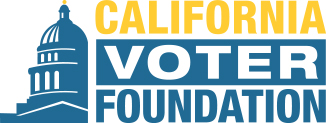Excerpts:
You’ve seen the posts on Twitter and Facebook, or maybe someone forwarded a WhatsApp message about suspicious activity with California’s recall ballots.
Unfounded rumors about election security have always been around, but they’ve been rampant since the 2020 election and former President Trump’s “Stop the Steal” movement. Despite those allegations, the 2020 elections were found to be “the most secure in American history,” according to a statement from a coalition of government and election industry officials.
Claims of fraud in California’s recall election have been amplified on social media by some recall supporters, as well by some of the candidates themselves, including Larry Elder, the Republican talk show host leading most polls.
So ahead of the Sept. 14 election, state and county election officials are emphasizing transparency — including allowing observers to watch the vote count — and ramping up messages to combat disinformation. On television and social media, the secretary of state’s office is running spots about how votes are safeguarded, including independent testing, paper trails and audits.
- - - - - - -
Ballot design: holes and folds
Kim Alexander, president of the California Voter Foundation, says misinformation is not always spread by conspiracy theorists: Sometimes, it’s just concerned or confused voters.
“Elections in California have never been simple,” she said, noting that some voting specifics vary from county to county. “That results in confusion and unfortunately some people, when they don’t understand something, jump to the worst-case scenario.”
Take, for example, the posts circulating about holes in mail ballot return envelopes. Some raised concerns that how they voted could be seen through those holes.
In response to one Los Angeles voter’s tweet, the county’s Registrar-Recorder/County Clerk noted the holes have been part of the envelope design for years. They allow voters with vision impairments to find where they need to sign, and they also ensure that no ballot is left in its envelope and uncounted.
“It does raise a concern that we need to address, but that doesn’t mean it’s a sign that someone’s trying to steal your vote,” Alexander said.
The envelope holes are one of a number of measures to help those with disabilities, including the Remote Accessible Vote-by-Mail system, which lets people with disabilities vote privately on their computer using whatever audio, visual or other technology they might need.
The process was temporarily opened up to everyone due to COVID-19, which led some conservative websites to claim it was a means of election theft. In 2020, 37,178 voters registered to receive the remote accessible ballots, according to the secretary of state’s office. (Full Story)

